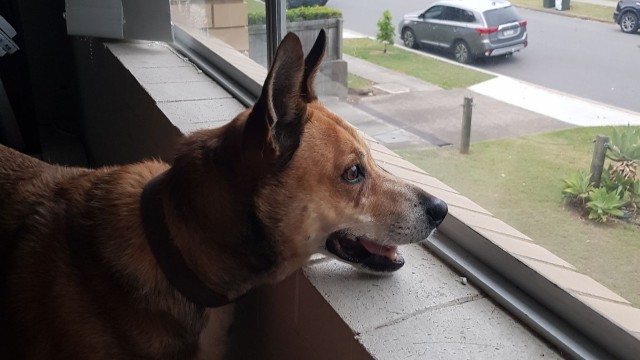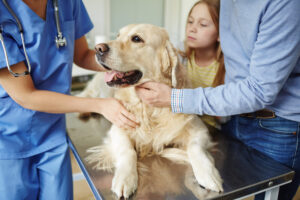
https://www.canstar.com.au/pet-insurance/prepare-dog-cat-for-work-return/
DANI HOOLAHAN25 November 2020Paws up if you’ve enjoyed working from home? While many of us have valued the flexibility of working from home, our pets have likely enjoyed it even more.
If you are a pet owner who has worked from home during the COVID-19 pandemic, your office return might be a big transition for your four-legged friends. They may even experience separation distress. Here, we provide some tips to help your dog stay happy and calm with this change.
Lockdown pets
During COVID-19 lockdowns, many pet shelters in Australia were emptied, with an increase in puppy and kitten adoptions and an abundance of new pet parents. Having a pet at home has been shown to lower stress, and the rise in Australians working remotely has correlated with many fur babies being welcomed into new homes.
However, for dogs, the restricted access to people, other dogs, parks and puppy schools may have resulted in decreased opportunities for developing confidence and essential social skills. Preparing your dog for your return to work when you may be leaving the house for prolonged periods will take time, so the earlier you get started, the better for your pet.
- How do I know if my pet is stressed?
- How do I know if my pet is stressed when I’m not home?
- What steps can I take to prepare my pet for my return to the office?
- How do I help my pet cope when I’m away from home?
- What can I do to help grow my pet’s confidence when I’m away from home?
https://platform.twitter.com/embed/Tweet.html?dnt=true&embedId=twitter-widget-1&features=eyJ0ZndfZXhwZXJpbWVudHNfY29va2llX2V4cGlyYXRpb24iOnsiYnVja2V0IjoxMjA5NjAwLCJ2ZXJzaW9uIjpudWxsfSwidGZ3X2hvcml6b25fdHdlZXRfZW1iZWRfOTU1NSI6eyJidWNrZXQiOiJodGUiLCJ2ZXJzaW9uIjpudWxsfSwidGZ3X3NwYWNlX2NhcmQiOnsiYnVja2V0Ijoib2ZmIiwidmVyc2lvbiI6bnVsbH19&frame=false&hideCard=false&hideThread=false&id=1239684835335122948&lang=en&origin=https%3A%2F%2Fwww.canstar.com.au%2Fpet-insurance%2Fprepare-dog-cat-for-work-return%2F&sessionId=362f9f740aa450ba108c69fd4c369fb9d324409a&siteScreenName=CANSTAR&theme=light&widgetsVersion=f001879%3A1634581029404&width=500px
How do I know if my pet is stressed?
First, you should begin by identifying if your four-legged friend is stressed. According to PetSure’s Chief Dog Wrangler, Ilsa Ford-Foreman, the key to understanding dog behaviour is to consider it in context. If your pet licks their lips after a meal, that is normal behaviour in the context of eating. However, if a dog is licking its lips when it hasn’t had any access to food or water, this could be a sign that they feel uncomfortable. Just like people, situations that trigger stress can vary and are specific to the individual.
Pet stress signals
- Withdrawing from or avoiding people, other dogs, sounds or objects
- Lip licking, avoiding eye contact, turning head or body away, yawning, shaking or ‘shake it off’, frantic sniffing, panting
- Loss of appetite
- Inappropriate toileting
- Hiding for prolonged periods of time (cats in particular)
- Fidgeting or not settling
- Over grooming, excessive licking, hair loss
- Shadowing (following you or someone constantly around the house)
- Body shaking or tremors
- Obsessive behaviours such as pacing or tail chasing
- Destructive behaviours
- Excessive barking or howling
Generally, cats are more solitary animals. However, they can still display signs of stress for a variety of reasons. Some of these reasons may include:
- Change in environment or household routine
- Other household pets
- Family environments with young children
- Illness
- Neighbouring pets or competing cats
If you notice any of the above stress signs in your cat, it is advised to make a trip to your vet to discuss further.
How do I know if my pet is stressed when I’m not home?
The behaviour your pet displays when you are home can indicate how they behave when you’re not. For example, a dog who shadows you likely lacks confidence and independence. Therefore, when you leave the house, there is a good chance this lack of confidence is still present and leads to behaviours such as your dog pacing or waiting by the front door. Here are some ways you can find out:
- Monitor using cameras
- Ask your neighbours whether they have noticed any increased barking or howling
- Assess how your pet behaves when you come home and if anything seems out of place. If they seem frenzied, but-calmer shortly after you come home, there’s a good chance they’ve been stressed during the day.
If your pet is causing damage while you are away, then you may be moving too fast in transitioning to time away from them. To prevent this and reinforce calm, relaxed behaviour, read on.

What steps can I take to prepare my pet for my return to the office?
Whether or not your pet is displaying stress signals, we certainly don’t want to trigger the onset now that we are getting back to our old routines. So, here are some ideas on how to begin the transition process:
- Begin crate or place training while home. These exercises teach your dog that their safety and comfort is not dependent on your presence, building their confidence and independence.
- Start with short periods of being away from home – the amount of time will depend on your dog and their existing level of confidence. Very gradually increase the amount of time your pet is left alone from a few minutes to a few hours. Think of it like levels in a game. The end goal is a level at which your dog is completely comfortable alone at home. You must start at and pass level one before proceeding to the next. If your dog is showing signs of distress, do not continue to the next level until they have ‘passed’ this level. Remember that there is no set schedule to follow – it is completely dependent on your dog.
- Pair your departure with something novel and exciting for your pup to do alone, such as play with a treat dispenser ball filled with yummy treats or a new toy.
- Avoid routine around bags, shoes and leads. If a lead is only ever touched when going for walks, a dog will get excited as soon as they see the lead. If your bag or shoes by the door are only ever put on when leaving for long periods, your pup will likely figure out these patterns and may become stressed by them. Think about what items you take with you every time you leave the house, but rarely touch otherwise and begin to move them about more frequently, especially when you’re not planning on using them.
- Make your arrival back home ‘no big deal’. Hyper excitement can encourage your pet to anticipate your arrival for the whole day.
How do I help my pet cope when I’m away from home?
When it comes time for you to leave your pet alone there are a few things you can do to make them more comfortable. Pairing your departure with something positive and fun helps take your pet’s mind off your absence. For example, you can try:
- Positive enrichment (something mentally or physically stimulating) such as puzzle feeders (objects or toys in which an animal must use their brain and problem-solving skills to gain access to food, rather than just eating out of a bowl).
- Dog toys. Having more than a couple of toys around the house at one time can add to your dog’s stress, as they might become overwhelmed. Instead, select toys that are valuable to the dog without a person on the other end (e.g. a KONG) and keep them on a rotation every week or two to ensure they don’t become bored.
- Start to modify your walk schedule. You should plan and be prepared to take a longer walk in the morning or evening, rather than during the work day.
There are many tips on how to help your pets deal with separation distress or anxiety online, including this article from the RSPCA. If your pet misbehaves while you are away, we do not recommend disciplining it as the window for it remembering the bad behaviour is only about three seconds. Instead, look to determine why the pet misbehaved – for example does it need more exercise or stimulation? Treat the emotion and the behaviour improvement will follow.https://www.youtube.com/embed/HWT9DI7hMfo?feature=oembed
What can I do to help grow my pet’s confidence when I’m away from home?
Ensure the following needs are met (specific for your dog) when you’re home. This will help shape a happy and confident pet.
- Adequate exercise (depending on your pet, this can range from a gentle walk to a game of fetch or even agility courses). If you don’t have time to walk your dog, you can consider finding a professional dog walker to provide exercise. Some share economy sites that list dog walkers include Pawshake, MadPaws and Woofly.
- Focused obedience or trick training sessions (you can source these yourself on the internet or reach out to a qualified dog trainer or dog club)
- Games of fetch or tug with the family
- Independence building with structured alone time, utilising crate or place training
As with all pet medical concerns, your vet is the best source of information and assistance. If you have questions or concerns specific to your pet, it is good idea to book an appointment with your Vet and they’ll be able to work through a treatment plan that best suits your pet’s needs.
This article was reviewed by Senior Finance Journalist Shay Waraker and Sub Editor Jacqueline Belesky before it was published as part of our fact-checking process.





